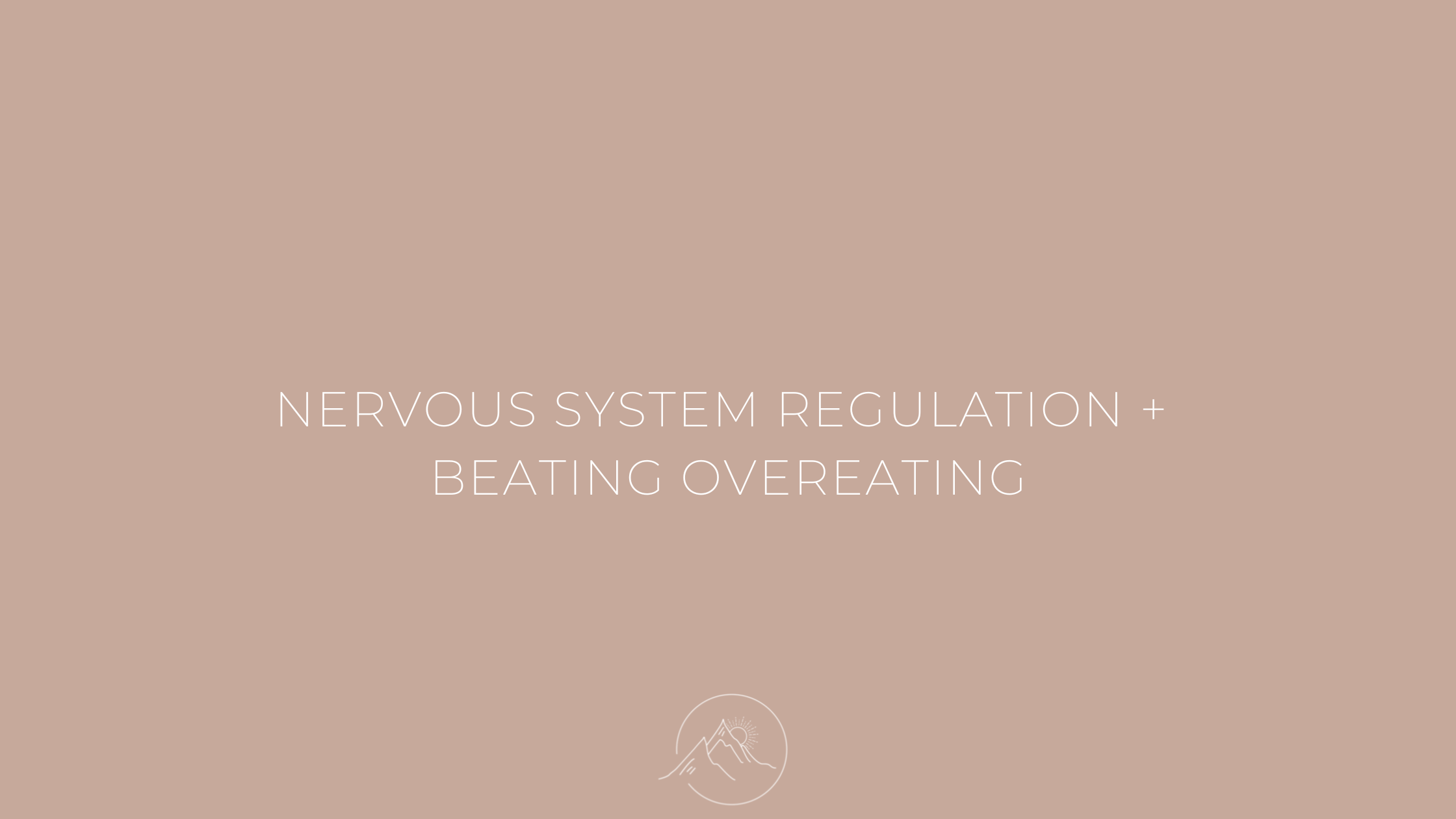What is the missing link or the missing puzzle piece in so many individuals’ journey to heal emotional, overeating, and binge eating?
For many people who have tried mindset work, talk therapy, affirmations, strategies and techniques to find freedom from cyclical patterns with food, they still feel unsuccessful. Why is that?! – I believe that nervous system regulation is the missing link in helping you stop the patterns of emotional, overeating, and binge eating and has the power to free you from being stuck, especially if traditional mindset work and traditional talk therapy hasn’t been successful.
So, how do you know if your nervous system is dysregulated? And how might that be impacting your relationship with food?
There are several signs that may indicate nervous system dysregulation.
- Anxiety – If you’re constantly feeling on edge or anxious or stressed, this could be a sign that your nervous system is in a state of dysregulation.
- Fatigue – If you’re constantly feeling tired or exhausted, that can be a sign that the body is in a constant state of fight or flight.
- Disruptive Sleep Patterns – If you’re having trouble sleeping or are dealing with insomnia, if you struggle to get to sleep, stay asleep, or have a restful night’s sleep.
- Digestive Issues – The nervous system plays a really important role in regulating digestion so if you’re experiencing digestive issues, such as constipation or diarrhea or abdominal pain, that could be an indication of nervous system dysregulation.
- Chronic pain – Nervous system dysregulation causes chronic inflammation, muscle tension, and headaches.
- Immune system dysfunction – The nervous system plays a role in regulating the immune system. So if you’re dealing with frequent infections, or allergies, or autoimmune conditions, perhaps your nervous system and nervous system dysregulation is playing a role in that.
A dysregulated nervous system also can lead to emotional eating because our nervous system plays such a huge role in processing and regulating our emotions. If we’re dysregulated and we’re dealing with uncomfortable emotions, and the nervous system isn’t able to keep up with processing those, then it leads to more dysregulation. This leads to more emotional overeating because we’re trying to pacify or numb out the discomfort of those emotions.
When we begin to understand how the nervous system works and that the nervous system is involved in guiding nearly everything that we do, think, and feel…then we can recognize that feeling an urge or impulse is a physical sign that dysregulation is happening in the body.
I teach my clients about the two different states of nervous system dysregulation and I want to explain this in terms of thinking about your emotions and your emotional well-being as a thermostat inside of your body. So think about being in a calm, cool, collected, connected, compassionate, balanced, supportive, alert, grounded state – that’s what’s known as being within your Window of Tolerance. That’s when you are optimally aroused. When your nervous system and your body is in a state of optimal arousal, we can think clearly, we act clearly, we act in alignment with our goals. It’s when we feel our best.
Now, we can start to become dysregulated and either emotionally warm up or emotionally cool down. With the nervous system, the Window of Tolerance is the optimal place the body likes to be because it’s homeostasis, it’s balance, it’s where your body feels best. When we enter those states of dysregulation and we go into this state where we are heating up, this is called the hyper aroused state. This is kind of the fight or flight state. When your body is cooling down, you’re going into a state of hypo arousal and this is what’s known as the freeze response. Fight, flight, or freeze.
So the first step to regulating our nervous system and beating overeating is to recognize when you feel an urge or impulse that there is something going on in your body. Tell yourself, “Hey! There’s things going on not only mentally, but also on a body-based level. It’s not my fault. I have been conditioned into this from a variety of different life situations. I can give myself grace and compassion.”
Once we have this awareness, we can determine where our system is currently. There’s so many different body-oriented techniques. Before we can start using them, we need to know where we’re going on the spectrum of dysregulation – heating up or getting too cold, hyper or hypo aroused, so that we then know which nervous system regulation techniques to use in the moment.
My encouragement is, this week start to pay attention to where your system is on your internal thermostat when you experience urges or impulses with food. My team and I also created a listener-exclusive PDF on tips and tools for nervous system regulation – to download, click here! And stay tuned for our upcoming nervous system segments to learn more about the tools we can use in each state!




